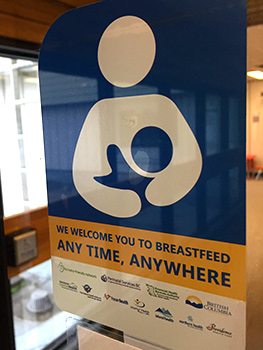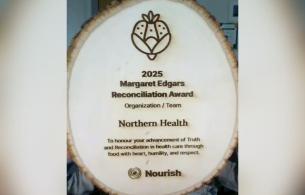We’ve all heard the saying: “It takes a village to raise a child.” What could this mean for breastfeeding? Since breastfeeding is specific to a parent and their child, you might wonder what role, if any, there would be for you here. In fact, child care providers and others who work in early years settings can support breastfeeding in many ways. So how can you help?
Breastfeeding is important
There are many reasons families value breastfeeding, such as bonding, soothing, connection, ease, and health. It also helps with children’s immune systems, growth, and development. Breastfeeding is important for mothers, too, and can even help to protect them from some types of cancer.
In fact, the longer breastfeeding continues, the greater the protective effect for both mothers and children. For this and other reasons, breastfeeding is not just for young babies. Rather, it is encouraged for up to two years of age and beyond, for as long as mother and child wish to continue.
Breastfeeding is protected
BC’s Human Rights Code protects the right to breastfeed. This code states that:
- Nursing mothers have the right to breastfeed their children in public areas.
- It is discriminatory to ask a mother to cover up or breastfeed somewhere else.
While the BC Child Care Licensing Regulations don’t focus on breastfeeding, there are pieces that help to support parents with their feeding goals. Licensees must:
- Promote healthy eating and nutritional habits - Section 48(1)(b)
- Ensure that a parent has reasonable access to his or her child while the child is in the community care facility - Section 49(1)
- Keep current records of written policies and procedures regarding food and drink to be given to children - Section 56(1)(e)

Breastfeeding is normal
I have read, “When enough mothers nurse their children in public, it will become so common, no one will notice.” For now, I know that not all people feel comfortable with this. Those working in early years settings can play a key role in normalizing breastfeeding. You can:
- Show a positive attitude about breastfeeding
- Promote their program as a breastfeeding-friendly space (e.g. on websites, in parent and staff handbooks, or with posters and decals)
- Have a written policy that supports breastfeeding
- Have books that show children, and other mammals, nursing (such as “We Like to Nurse”, by Chia Martin)
For families that are breastfeeding and/or giving breast milk to their children, you can:
- Discuss how to support them to keep breastfeeding while their child attends your program
- Welcome visits from parents
- Provide a comfy space for parents to feed their babies or to use a breast pump
- Create space in a fridge or freezer to store breast milk
- Have a process for storing, handling, and feeding expressed breast milk
Child care providers can help
There is no doubt that breastfeeding is easier when parents have the support of the people around them. We all have a role to play! Many tools can help. You can:
- Check out Northern Health’s Breastfeeding and Breast Milk webpage
- Display this poster: Yes You Can: We welcome you to breastfeed, any time, anywhere
- Learn more about Storing breastmilk and breastfeeding at work
- Order this window decal: We welcome you to breastfeed any time, anywhere
- Review and share this tip sheet: Make breastfeeding your business: Welcome families to breastfeed any time, anywhere














Comments